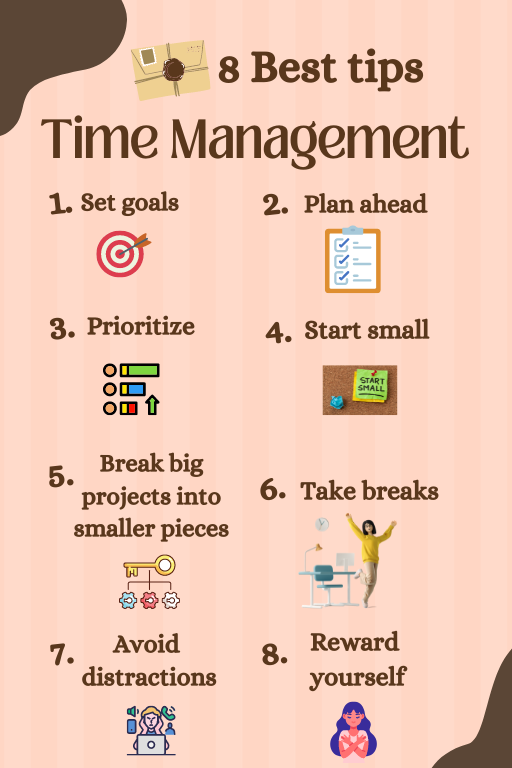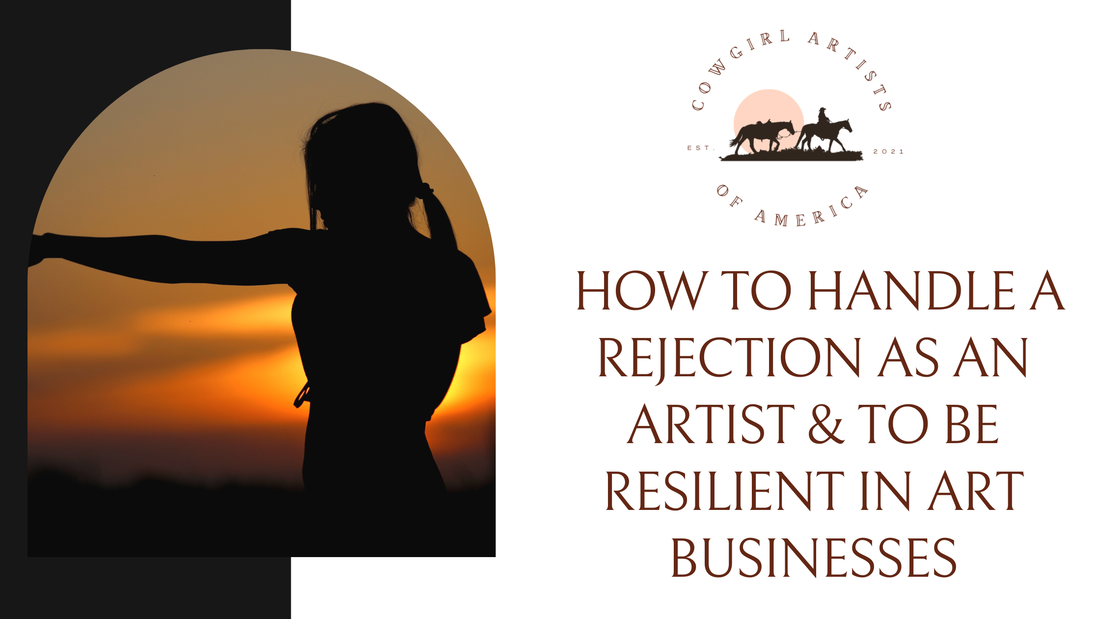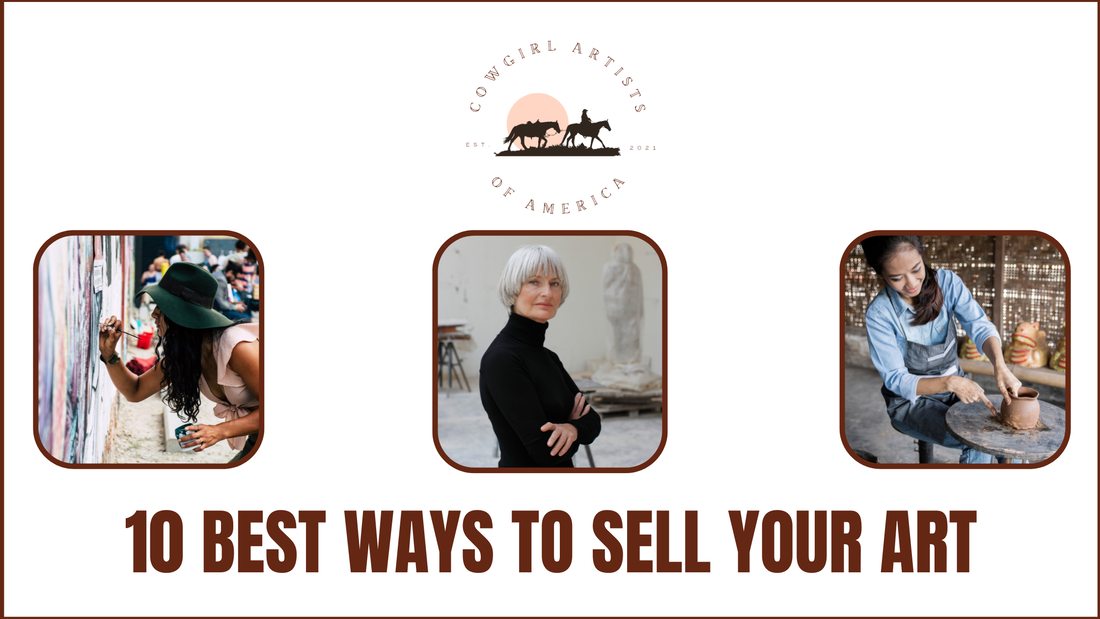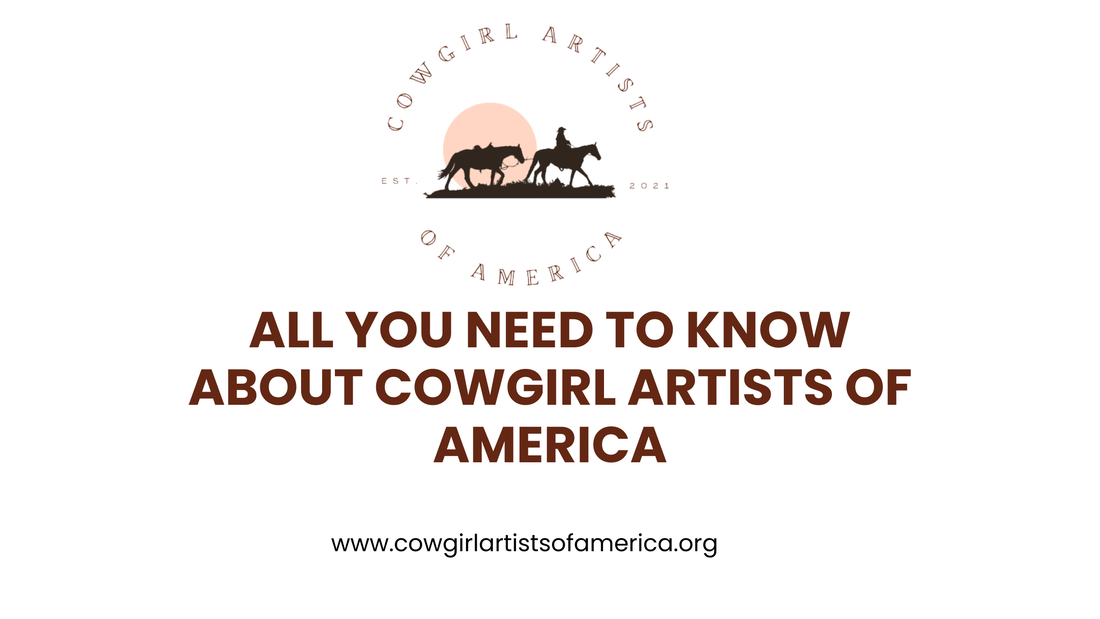|
Time management is a very important aspect of being a business owner. The secret to getting the most out of your time for your work and personal life– is you must learn to manage time. Managing time helps you to stay motivated and engaged in your career. Being great at managing your time will also mean you are not as stressed out, as you will have learned to only take on responsibility for things you actually need to get done. Having a plan is a huge help to keep your focus on your tasks and use your time wisely.
In this article, I will explore why time management for artists is essential, and leave some tips to implement time management so that you can see improvement in your performance and productivity. "Time is more valuable than money. You can get more money, but you cannot get more time." - Jim Rohn Why is Time Management for Artists essential?Many artists know how to create incredible artwork but may not know how to manage their time. They have so many responsibilities in addition to creating artwork. Despite popular belief, most artists spend a significant amount of their time managing the business of their art; whether it’s managing social media accounts, developing sales tools, cultivating and maintaining relationships with clients, developing public relations plans, or becoming familiar with and confident in the many channels available to the creative market. The time spent out of the studio is not lost time but rather a time for nurturing and developing the business of your art. Artists should strategically split their time to each side of their business so that they achieve their business goals and get a higher return on the time investments they make. That is to say, time management for artists is essential to improve art business performance and productivity. 8 Best Time management tips1. Set goals
The best thing you can do is set your goals, and keep track of what you’ve accomplished. You need to bring awareness to how you are spending your time so you can create a great time management plan and follow through with it. One solution is to take a few minutes every morning to brainstorm what you want to accomplish and add those goals to your calendar. You can list your goals in a word document.
Some examples of artistic goals are:
2. Plan ahead
Make a daily list of everything you’re going to get done today. This includes things like writing down tasks that need to get done, making lists of things that need to be completed, etc. You may want to be a little more detailed in this list (i.e. list the steps to accomplish the goal). Planning ahead helps you stay organized and avoid procrastination. If you notice you are off task you can look at your list to help you refocus
For example: To get more followers on social media some things on your list might be:
3. Prioritize
Prioritizing means deciding what is most important to accomplish first. When you have a lot going on, it’s hard to know where to start. But if you prioritize your tasks, you can focus on the most important ones first. It is always better for an artist to design/create art when he/she has high energy. In that case, first priority in that time has to be for art creation rather than other work. Knowing what to prioritize can be a challenge. You need to take into account all your tasks/goals, any pressing deadlines or obligations, etc.
Some people find that their brain is sharpest in the morning so it can be a good time to get some of the business side of things done, and then end your day with art creation. Other people prefer to set certain days aside for business tasks, and other days for creating. There is no one size fits all approach, but making sure to start with what is the highest priority is necessary for making sure you don’t miss out on good opportunities. 4. Start small
Start small. Don’t try to tackle everything at once. Instead, take one task at a time and complete This helps you keep your full focus on one task at a time. Remember you don’t have to accomplish everything overnight.
5. Break big projects into smaller pieces
Break more significant projects into smaller pieces. Take time to define exactly what the exact challenge is. I don’t mean to avoid it, but if you’re working on a project that’s beyond your skill level or it takes you so long to complete that it puts you in a rut, you can’t realistically expect to finish it within a short amount of time. If you’re working on a project requiring a lot of attention, break it into smaller parts. That way, you won’t feel overwhelmed and you’ll be able to finish the project sooner.
6. Take breaks
Take regular breaks throughout the day. Get up and move around every hour or two. Stretch your legs, drink some water, and clear your head. This can help to boost your mind and keep you energized throughout the day. This in turn helps to improve your performance in the work.
7. Avoid distractions
Many people spend their time on their computers and phone and listening to music, podcasts, and audiobooks. You may be constantly inundated by phone and computer notifications which are some of the biggest distractions. Utilize the automated systems on your phone so you don't have all of your work-related notifications on all the time. Learn to silence notifications when you really need to focus. If you have any notifications on your internet browser, disable them. Of course, some people enjoy listening to music, podcasts, or audiobooks while they are creating, but pay attention- what works while you’re creating may be a hindrance when you are checking emails or doing bookkeeping.
Digital notifications aren’t the only distraction though. It can be something as simple as that pile of laundry, or randomly wanting to chat with a friend. With many artists working from home studios, it is imperative that you value your work time and don’t fill it up with household chores and personal tasks. Flexibility in the schedule is a job perk, but respecting your work time (and expecting others to respect it) is a necessity. 8. Reward yourself
Reward yourself after completing a task. A reward doesn’t necessarily have to be materialistic; it could be anything that makes you happy. It also enhances your mind to do the next tasks and deliver the best results. Make sure to mentally acknowledge, or even write down, what you accomplished. Don’t just jump from one task to the next without acknowledging your hard work and accomplishments. People weren’t meant to live their lives by a constant checklist. Avoid burnout by celebrating what you accomplish.
Conclusion
Time management for artists is just as important as it is for any other professional.
It is rare for a person to achieve any success without a well-established plan and time management. Time management helps you to achieve your goals and reduce stress because your workflow is well organized and planned. Got time management tips? Share them in the comments. Useful Information for female artists:
0 Comments
Introduction
If you're an artist, you should know how to handle a rejection. Rejection can feel bad in the movement, but it’s not the end of the world, and there are ways to handle rejection as an artist and to be resilient in art businesses or grow in your career as an artist. There are times when you wonder why a gallery or a show rejected your artwork. You wonder if they didn't like your style, or maybe they already have someone who does similar work. Maybe they're full, or maybe they haven't had an opportunity to look at your artwork yet. Whatever the actual reason is, do not feel defeated. Instead, use it as an opportunity to learn more about yourself and your work, create more art, and develop more resiliency!
5 ways to handle Rejection as an Artist1. Accept that rejection is inevitableThe first thing you need to realize is that rejection is inevitable. It's a fact of life, and if you're not willing to accept it or deal with it then you will constantly live in fear, and never reach your full potential in art or any other area of life. The best thing to do when receiving a rejection is to keep trying! Don't let this experience stop you from creating great art or, even worse, prevent you from continuing on with your dream career as an artist. You can use rejection as an opportunity to learn and create more art. And most importantly, keep trying! A rejection is not a statement about your worth as an artist. It's just one person's opinion. 2. Don't let yourself get sucked into an emotional reactionIt's easy to feel sad, angry, frustrated, and even confused when your work is turned down, but don't let yourself get sucked into an emotional reaction. Remember, it’s not personal. If you're feeling discouraged, keep reminding yourself that the jury process is subjective, and opinions can vary so much from one show to another and one juror to another. You can always apply again next year or try a different venue. 3. Don't doubt your worth because of one opinionYour art is a representation of who you are and what you love. Because art-making can be so personal, rejection can feel like a personal rejection. Don’t doubt your worth as a person because your submission was rejected. Your personality, your skills, and abilities, your work ethic—these are things that make up the very being of who you are as an individual. Rejection can not take that away. Instead, evaluate your values and goals and pay attention to actionable steps you can take/ continue to take to help you reach your goals. You can start with a few questions: What do I want and what can I offer? How much money am I willing/able to invest at this moment? How will this opportunity help me grow as an artist? Will this opportunity align with my goals and vision/ or will it be a career growth opportunity? Remember, there are so many opportunities for pursuing your art career. 4. Own your hurt and disappointment
Learn from the experience and keep trying Own your hurt and disappointment. Whether you've been rejected for a show, or a gallery wasn’t interested in your artwork, it can feel like someone is saying "no" to you as an artist. That can hurt. The first step is acknowledging that what happened was painful. Allow yourself to grieve and recognize that it's okay if this rejection hurts. In other words “feel all the feelings.” At the same time, make sure that you don’t stay stuck in that place. (See point 2) Handpicked for you- 10 Different Ways to Sell Art. How do Cowgirl Artists of America members sell their art? 5. Surround yourself with great peopleArtist communities are a great way for artists of all levels to connect, learn from one another, and share their work. One of the great things about working in the arts is that you get to know a lot of other artists. You can find kindred spirits, share ideas, and build relationships that can last a lifetime. That’s why it’s so important to have a community of artists who know the struggles and joys of being an artist. A great community can build you up when you are feeling down, give you direction when you are feeling lost or confused, and help hold you accountable for your goals. Surround yourself with artists from all walks of life, with various backgrounds and experiences to take advantage of a wide range of wisdom. There are a variety of artist's communities available from local artist friends groups to national and international membership communities. These communities are invaluable in an artist's career and personal growth. We are so grateful for our CGA community, our partners, and all those great local art organizations, that are so often the backbone of the arts. How to be resilient in Art Businesses?
If your goal is to have a successful art business, you will have to learn how to handle a rejection and to be resilient. Resilience is the ability to recover from a setback. It's the quality of bouncing back after something bad happens. Learning how to cope with criticism and failure can help you avoid negative self-talk and manage stress, which in turn will make it easier for you to run your business and stay focused on your goals.
To be successful, you must be resilient. Here are six ways to become more resilient in your art businesses:
Handpicked for you- Self Confidence and Boundaries in Your Art Business Conclusion
Resiliency is a necessary skill to develop. It will keep you going when the going get’s tough. Resilience after rejection is a requirement of being an artist. Don't let a rejection stop you from creating great art or even worse, prevent you from continuing on with your dream career as an artist. Keep going and keep growing.
Rejection will always be a part of the experience of being an artist, so don’t try to avoid rejection, instead work toward being able to better handle rejection and continue to grow your career. Don’t give up! You’ve got this! 10 Best ways to sell your art. How do Cowgirl Artists of America members sell their artwork?8/10/2022 Introduction
Figuring out how to sell your art can be daunting. But it doesn't have to be! There are many best ways to sell your art, whether it's through a gallery, online, or even on social media. Knowing what options for selling your work are available will help you make a more informed decision about what strategies will work best for your business.
10 Best ways to sell your art1.GalleryThe traditional way for artists to sell their artwork is in galleries. There are many benefits to this traditional approach, including building name recognition and improving your reputation, but you also have to pay the gallery commission. Typically galleries take around 35 - 50 percent in commission. This can be a worthwhile expense if the gallery is increasing your reputation, advertising your work, and handling sales and shipping, but it is not a good fit for everyone, and getting into a gallery can be challenging If you want to sell your art at a gallery make sure to search the gallery’s webpage for their submission process and make sure your work seems like it would be a good fit. You may also consider submitting work to online galleries, such as Western Gallery, owned by George Irwin.* Western Gallery is a respected online western art gallery. There are other, generic, online galleries that do not have a specific focus area like Saatchi Art, Artful Home, etc. These are drastically different from well-reputed, smaller galleries with a curated selection, like Western Gallery. As you chose the option that works best for you it is important to know your goals and business plan, to determine the best fit. “ I have primarily sold my work with Western Gallery and feel lucky to have started at the same time they were emerging into the art scene. Over the last two years, we have developed a happy working relationship based on integrity, reliability, and mutual trust, wherein both parties have grown and are now coming into their own. Honestly, this bond feels more like a vested partnership than part-time representation and I know that’s not always the case in the art world.” - Lucile Wedeking (Website, Instagram) 2. Online Shops and MarketplacesSelling your art online is a great way to reach a wide audience of potential buyers. You can sell your artwork through the most successful eCommerce platforms such as Etsy or Fine Art America and Amazon. This is an easy way to connect and attract potential customers and a wonderful way to increase your exposure. As with online galleries, the platform you chose should align with your goals as an artist and for your business. The approach of an artist who wishes to sell mass-produced work at a lower price point is very different from an artist who wants to build their reputation and cultivate a relationship with collectors, galleries, and the art world. “This is where I make at least 70% of my sales. I sell small works in an Etsy shop, Plein air pieces and smaller works on Dailypaintworks.com, and a few larger pieces from my website.” - Veronica Brown (Website, Instagram) 3. Art fairsArt fairs are another popular option for artists to sell their art. These events bring together a number of different artists in one place, making it easy for buyers to browse and purchase art. Art fairs can be a great place to meet potential collectors, build your email list, and sell your art. Be aware that different art fairs have different requirements. Some may provide a display set up and tent, and others may require you to bring your own. Some art fairs have volunteers to help watch your booth so you can take a break, but others expect you to be fully self-sufficient. Make sure you read through all the fair’s requirements and expectations before applying and committing yourself. “I love art fairs and they are a great way of connecting with new clients and building in-person relationships. It gives you a chance to tell your story to a potential buyer about each piece and to obtain their information for future contact. They are also a lot of work and can be very exhausting, but hopefully, the good outweighs the hard work and travel costs. Much easier if you have someone there to help you!” - Elizabeth Dryden (Website, Instagram) 4. Exhibitions and ShowsExhibitions are unique in that they take many forms, and there can be a variety of exhibition opportunities. You can organize your own exhibitions or collaborate with other artists in a joint exhibition. When you host your own exhibition you will need to ensure you have a place to show the work. For an informal exhibit, you could collaborate with local businesses, like restaurants, to host the work. For a more formal exhibition, you will want to reserve space in an art venue or other space that has a more professional feel. Often you will need to apply and/or rent these spaces, and may also need to pay a commission on your sales. Stay aware of calls for art that fit your business model and work well for your style, and where you are in your career. Newer artists may find applying for and exhibiting their work in smaller, local shows, can help them build their reputation, get their work out in public, and sometimes win prizes. More established artists can enhance their career and reputation by applying for more difficult and well-respected shows. (Pro tip: Remember, rejection is part of being an artist. Don’t let rejection get you down.) “I recently have participated in 2 shows where I was the featured artist. I had little to no expectations for either and it is interesting how things have turned out. One show is at a historical museum that is visited by tourist by approximately 95%. I would never have guessed that a show in our area could be so successful! I have had to replace my photography several times and have run out of supplies. I have been very aware of what subject the customers have purchased and the price point that has driven those sales. People won't buy something they can't afford, for the most part. I have been asked to be the permanent artist at this venue because my work has been so popular.” - Susan Humphrey (Website, Instagram) 5. Festivals Festivals and fairs are very similar, but often festivals have more name recognition and turn out. Some of the larger festivals, such as the annual Art Basel event, attract buyers from all over the world. “Back in the 90s I did a lot of Art and Wine Festival type shows and had great success... It has only been since 2019 that I've been 're-emerging' into this world again... post-COVID, the last couple of festivals I participated in have been very good for me.” - Jeanne Cardana (Website, Instagram) 6. Open StudioThis can be one of the most cost-effective ways of selling your artwork. Host an event in your studio or home studio, where people can view your art and chat with you. Make sure that the space is clean, comfortable, and easy for individuals of all ages to come in for a visit. Also, consider offering light refreshments. “I have done pre-Covid home shows and they were great! Lots of interaction, fun, and sales! Look forward to doing them again!” - Dianna Fritzler(Website, Instagram) 7. Social MediaIn this digital age, Social Media is an amazing tool for building a group of fans and customers who admire your work. Social media gives artists a platform to express their unique personalities. Audiences can learn more about artists and their artwork from the comfort of their home, on an app they are already using frequently. Facebook, Instagram, and Pinterest are great social media platforms for promoting and selling your arts. Suggested for you- Self Confidence and Boundaries in Your Art Business “Social media is my #1 way to reach my audience. Almost every time I post a new piece, it gets shared and I get to reach new people. Don't be discouraged if you don't get many likes or shares at first, it doesn't mean it wasn't seen or appreciated. You will be surprised how many times someone will tell you "oh, I saw your beautiful art on Instagram" when you thought your post got no attention. Be sure to use hashtags so that you reach a wider audience than just your followers. Try your hand at Instagram reels or TikTok. Once I learned how to put audio and text on my reels (thanks for the lessons, CGA!!) I started getting hundreds to thousands of views instead of dozens.” - Tammy Pennington (Website, Instagram) 8. WebsiteA website can build trust for the audiences who visit your social media profiles. Having a professional-looking website is a useful way for potential art collectors to learn more about you and your products. Make sure your website contains relevant and engaging information and options for purchasing your available work. Having a website will improve your professional image, build social proof, and increase the chances of converting your audiences or fans into customers. Websites are also great tools for showcasing your art and giving potential buyers access to detailed information about your art. A good website should include high-quality images of your art, prices, descriptions, contact information, and any other relevant details. Make sure to include links to social media pages, like Facebook and Twitter, so people can share your art with their friends. "Direct sales on my website have been so-so, but it is important to have a professional looking website that is functional. It is a great way for galleries to see your work for one thing and also shows that you take your work/business seriously". - Debbie Carroll (Website, Instagram) 9. EventsTaking part in local events, or even organizing your own event, is another way you can sell your work, and get your work in front of more people. Make sure the event is fun and enjoyable and aligns with your vision and values for your work and career. If it fits your business plan you may consider offering a discount to motivate people to purchase your art. “ The only kind of "events" I have participated have been auctions. I have worked with organizations that support and protect wild horses, and now I am partnering with a wild horse rescue in Colorado. I do provide paintings for auctions for them to fundraise. It is a win/win. They get exposure through my Facebook page and website, and I get exposure through theirs…” - Linda Briesacher (Website) 10. Private CommissionsMany artists are intimidated by commissions, especially when they are just starting out, but private commissions are another great option for selling your art. Private commissions are also a great way to build a relationship with your collector. For a private commission, you will work with a client to create a custom piece of art, based on their specification. (Pro Tip: Have a good contract, and make sure everyone is on the same page for what work you are creating, the price of that work, the payment schedule, and the expected completion date…) “This is my favorite way to sell my art. You are creating for someone who likes your style and knows you will deliver a piece of art that they will cherish for a long time and pass on to others.” - Kellee Mitchell (Website, Instagram) How do Cowgirl Artists of America members sell their art?Cowgirl Artists of America (CGA) is a great artist community, that provides artists with opportunities to promote their work through various venues and collaborations on Social Media and on the Cowgirl Artists of America Website. CGA’s goal is to provide support and education to artists whether they are just starting out or experts in their field. Depending on your membership level, you will have opportunities to exhibit your art on our website, social media, and CGA-associated galleries/partners. We also provide supports that help you as you expand into new territories. CGA takes a holistic approach to our mission by providing artists with various services, support, training and education, social media promotion, advertising opportunities, and networking. To wrap things upIf you're an artist looking to sell your artwork, there are a number of options available to you. You can work with a gallery, sell commissioned pieces, participate in art fairs or open studios, or sell your work online. You will want to pursue the options that fit your business and artistic goals. Some options aren’t often available to newer artists. You will need to continue working on your style, and improving your skills and reputation for more of these opportunities to open up. Don’t get discouraged, it is a journey for all of us. There are also plenty of great resources to help you navigate your art career, and sell your work. Organizations like Cowgirl Artists of America are here to help. *As of the writing of this post, George Irwin is on our Advisory Board and we are partnering with Western Gallery for our first annual art show, Wild Flowers. What is CGA?
Cowgirl Artists Of America (CGA) is a community that promotes and supports female Western artists. It was founded in 2021 by Megan Wimberley, a contemporary western and wildlife artist, based out of Yosemite Valley, California. CGA’s holistic approach to its mission results in a variety of services for its members, including an annual art show, workshops, social media promotion, coaching, and more.
The mission of CGA
Our mission of Cowgirl Artists of America is to increase opportunities and representation of female western artists. We accomplish that through the four core beliefs.
Community: CGA believes that a supportive community is one of the most important resources for success. Our thriving community helps our members feel supported, find answers to issues, learn and share. Our private Facebook community provides a forum for artists to have ongoing conversations, and get feedback on their work and career. We believe in a community of abundance and breaking down competition barriers to cultivate a supportive sisterhood. Collaboration: CGA believes that collaborating with industry leaders is the most impactful approach to change. We build bridges through our partnerships with industry leaders. Through these partnerships, we increase awareness, expand opportunities for artists, and increase representation. Education: CGA believes that providing resources and education for career growth and art education will empower cowgirl artists to gain confidence to become leaders in the western art world. We are working to develop resources for organizations that will help them identify areas of improvement and make a plan of action to help within their organization and places where they have influence. Promotion: CGA believes that promotion is a basic requirement for artists to grow their business. We will work to increase the exposure of cowgirl artists through our monthly call for art and CGA-hosted shows and member awards. We are always adding to our resources and opportunities. Handpicked for you- Self-Confidence and Boundaries in Your Art Business Accomplishing our goals
Why should you join CGA? What are Member Benefits?
Cowgirl Artists of America(CGA) is a group of female artists. We provide a supportive and creative environment for women working in the arts. All mediums are welcome. Many of our members work in painting, sculpture, and photography. Whether you are a beginner or an expert CGA provides support to grow your art career in the western art world. Check out the benefits of becoming a member of CGA:
Handpicked for you- 7 Tips to Help you Speak about your Art with Confidence How to become a member?
To join CGA, you’ll first need to decide which type of membership best suits your needs — Basic or Basic+Signature. Once you’ve decided that, you'll fill out the membership form. Basic membership is $120 per year and Signature members pay an additional $25 to apply. Click here to learn more about Basic membership and the Signature Membership add-on.
When will Enrollment open for CGA?
We are excited to announce that the Enrollment period to become a member of CGA is open from Aug 1, 2022, through August 15, 2022. Do not miss this golden opportunity to become a part of this beautiful community!!.
To learn more about our community click here. |
Archives
March 2024
Categories
All
|





 RSS Feed
RSS Feed